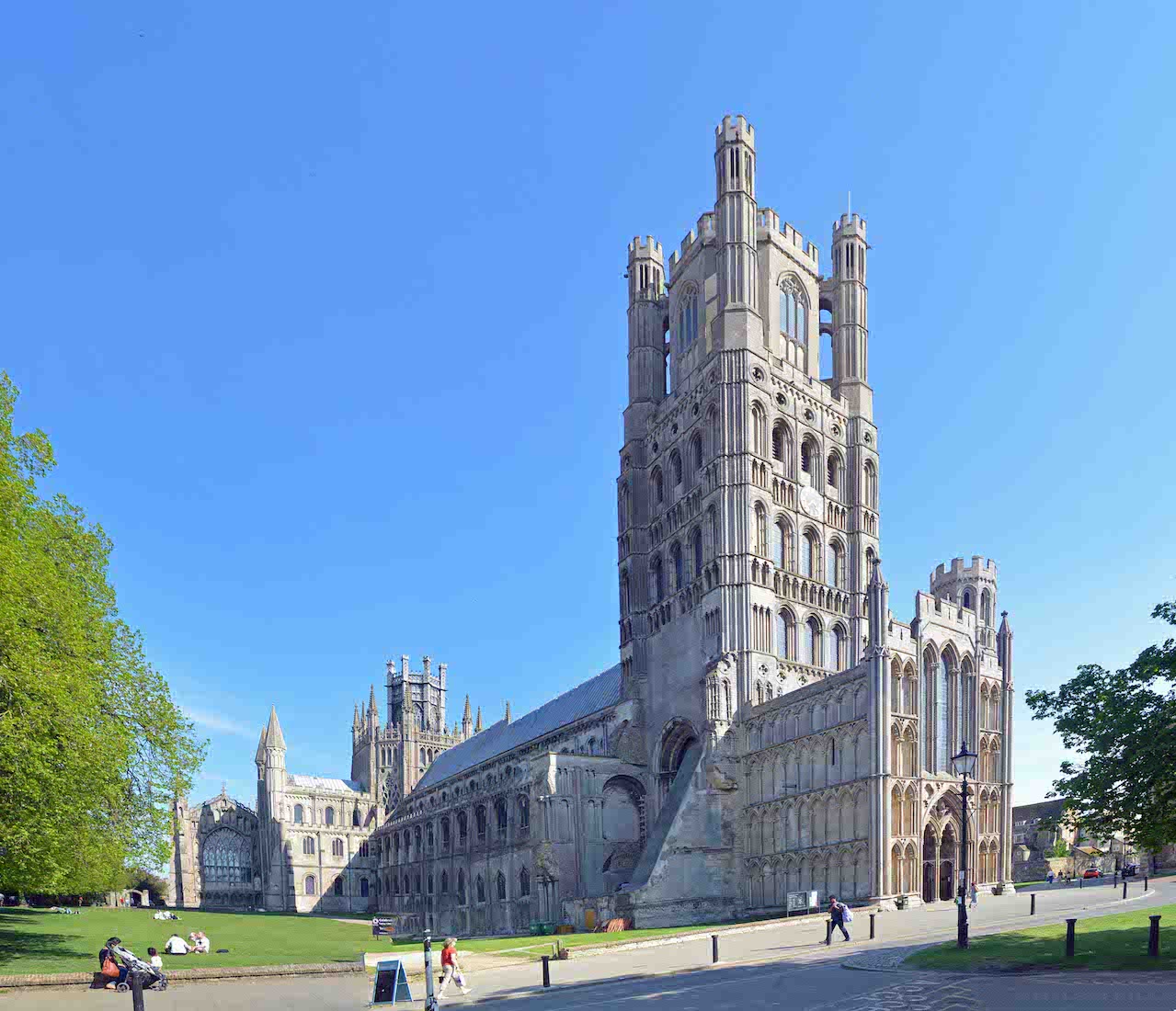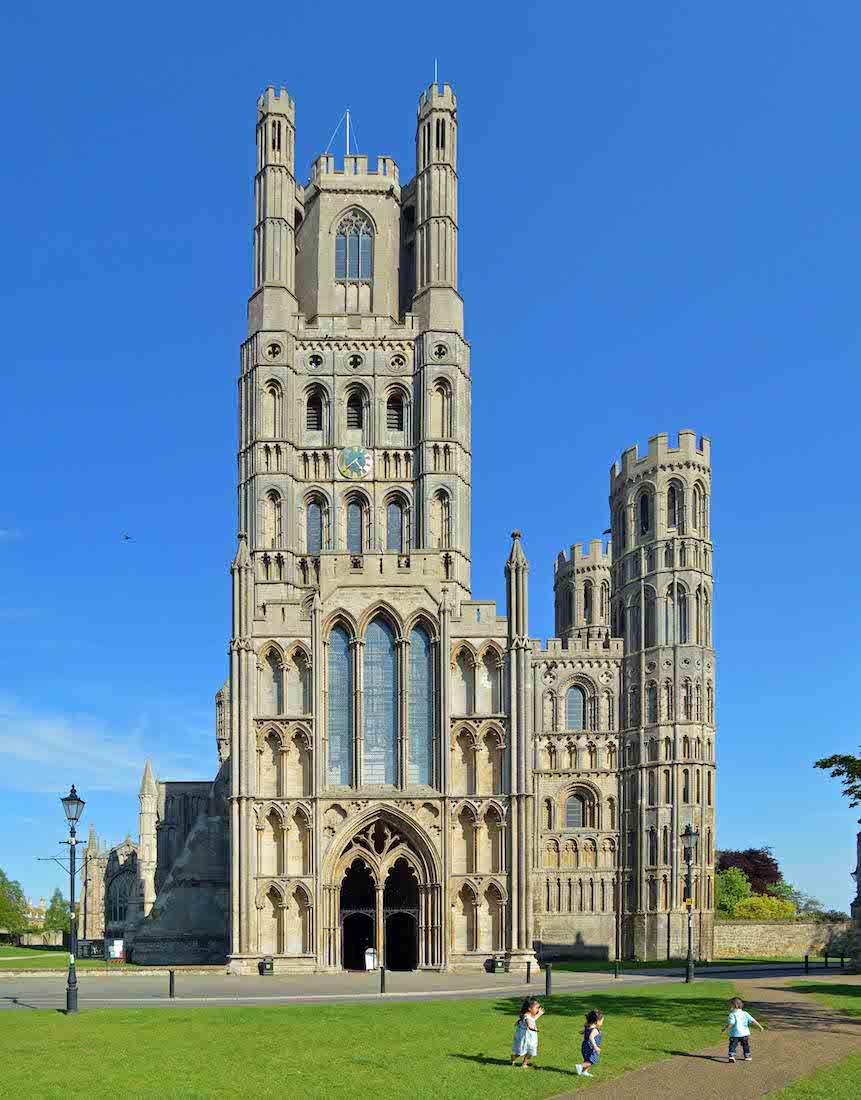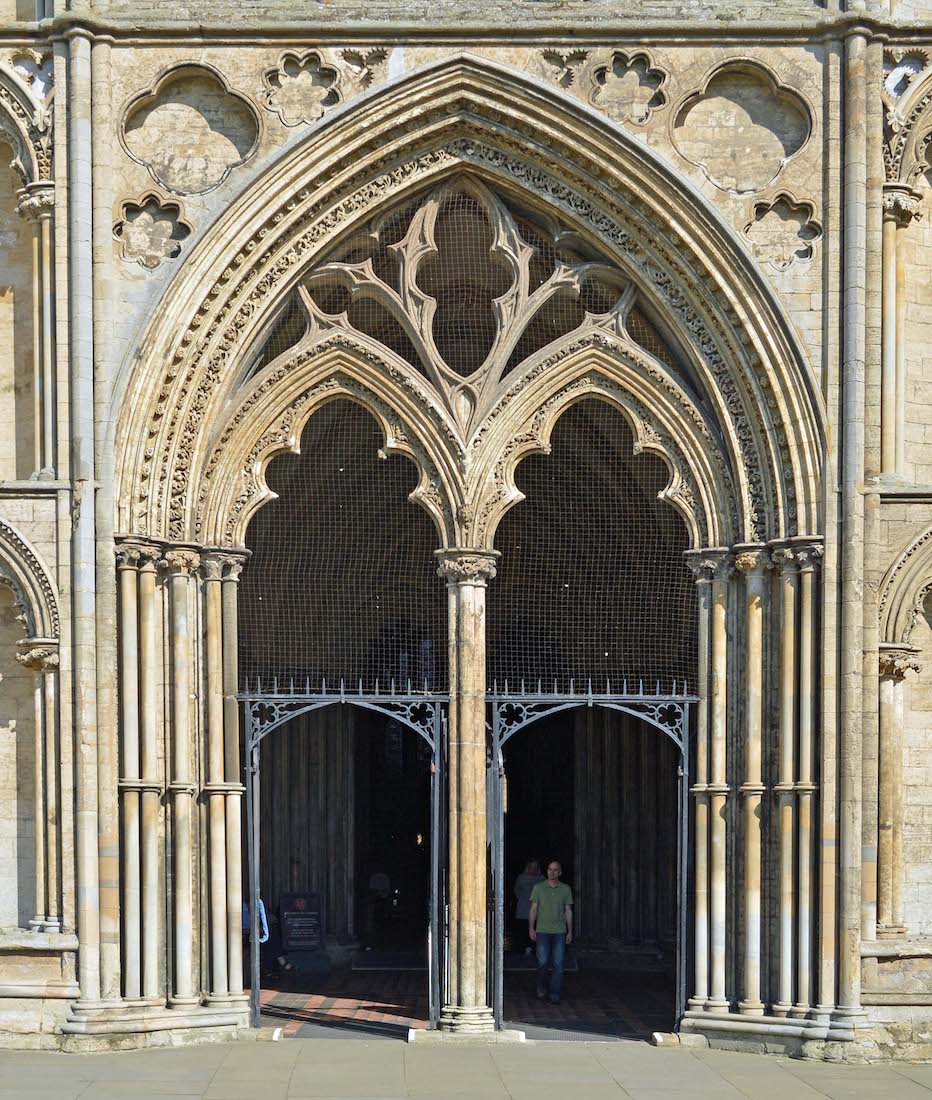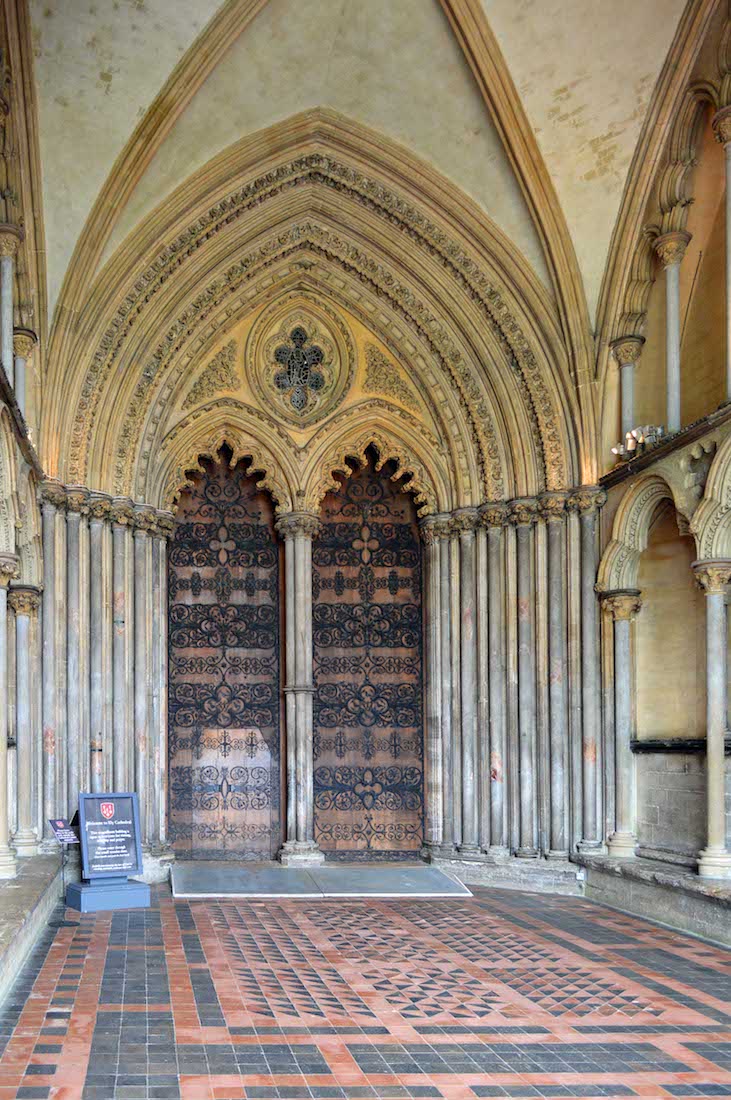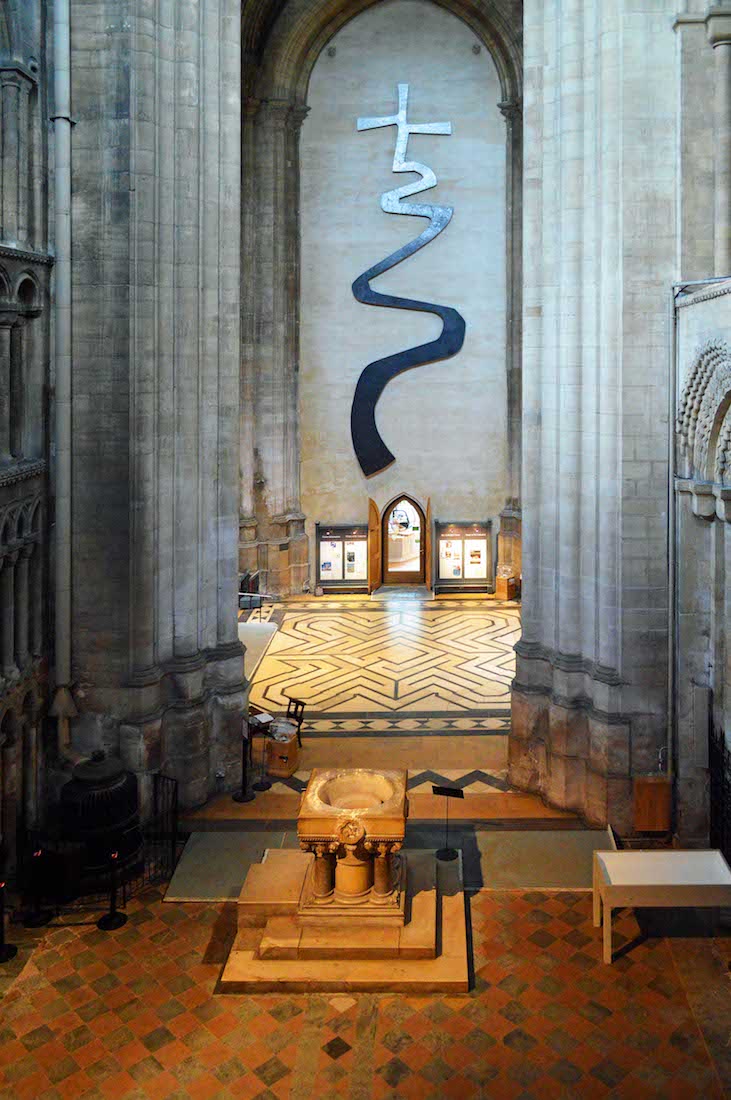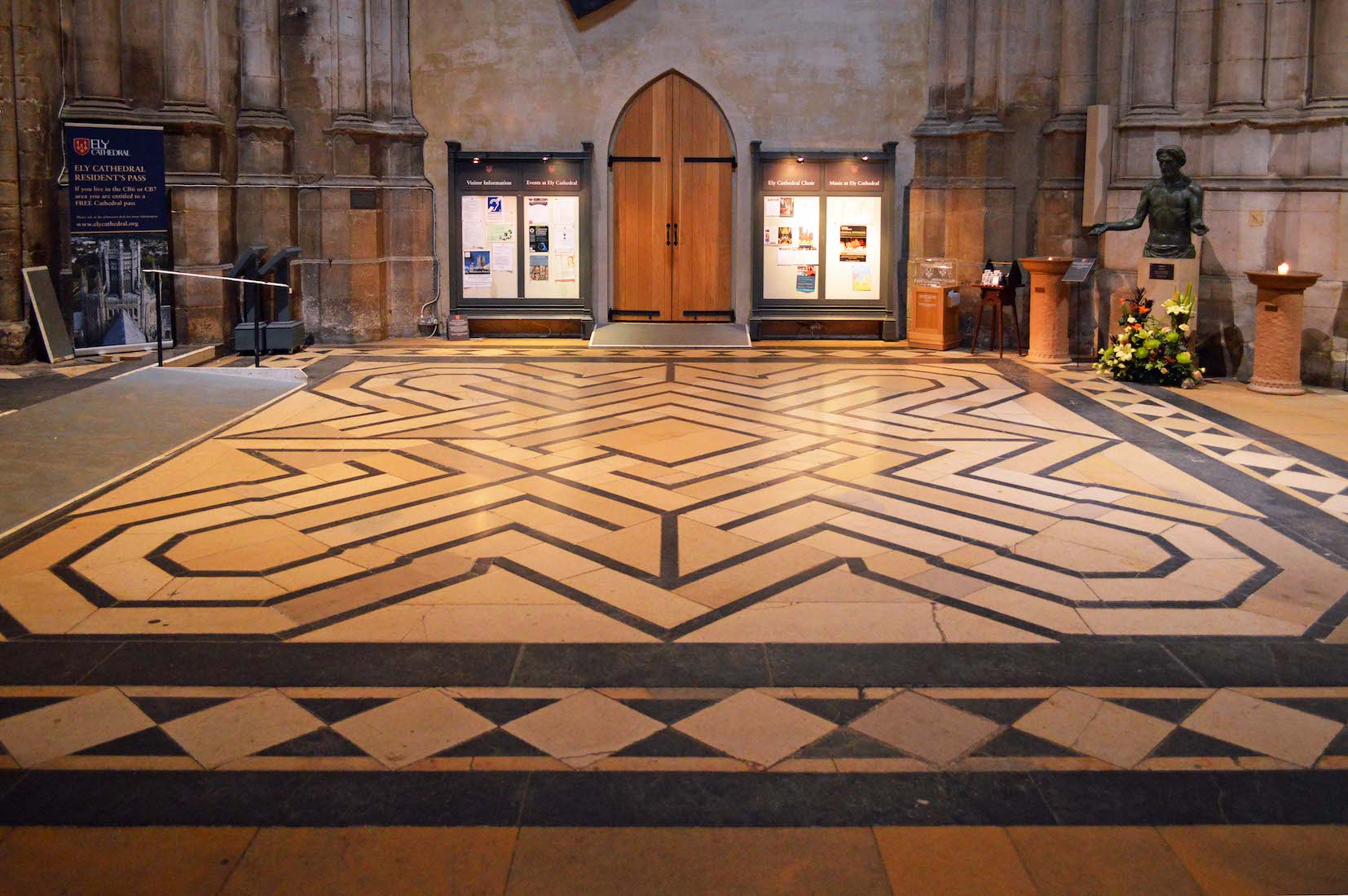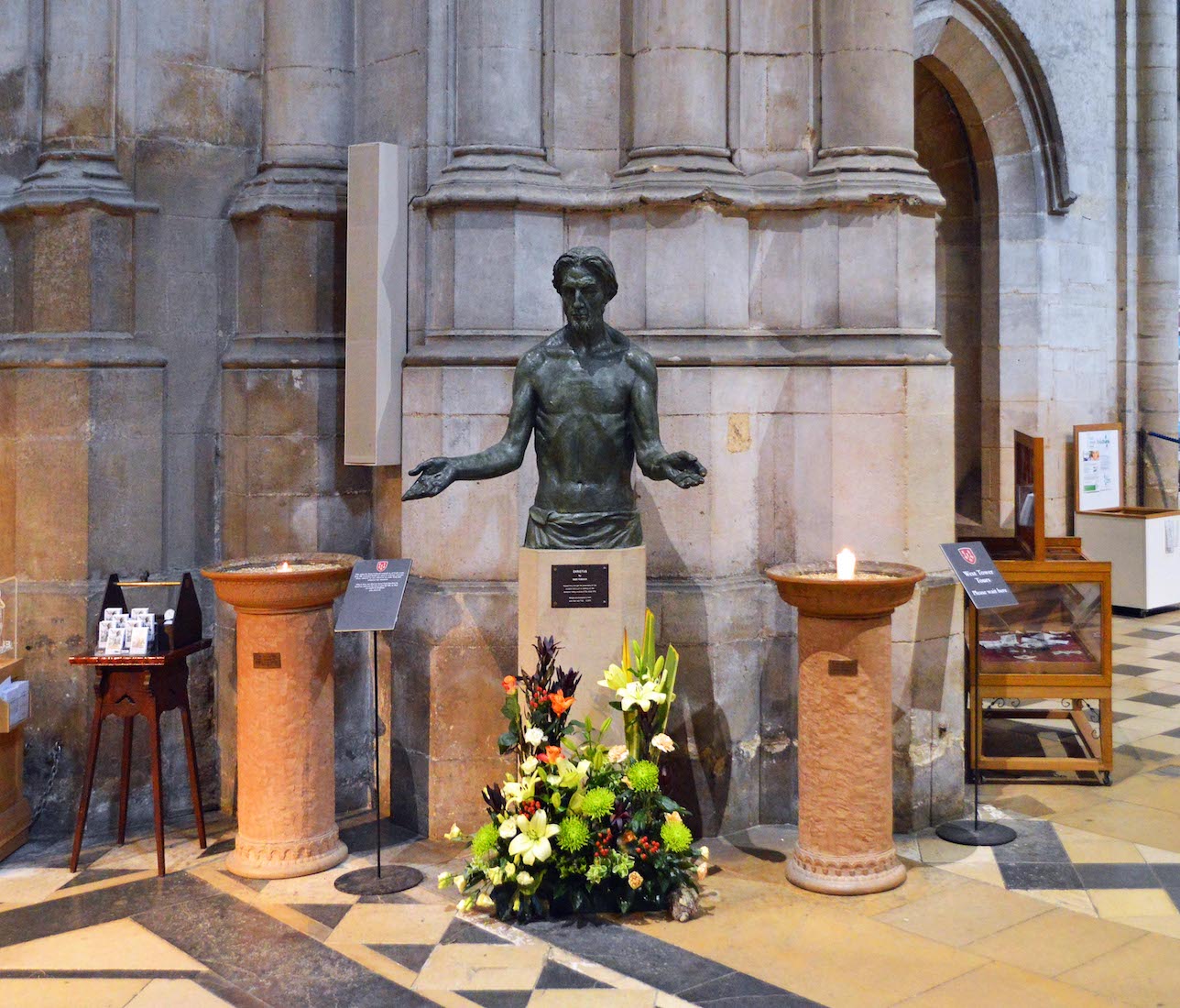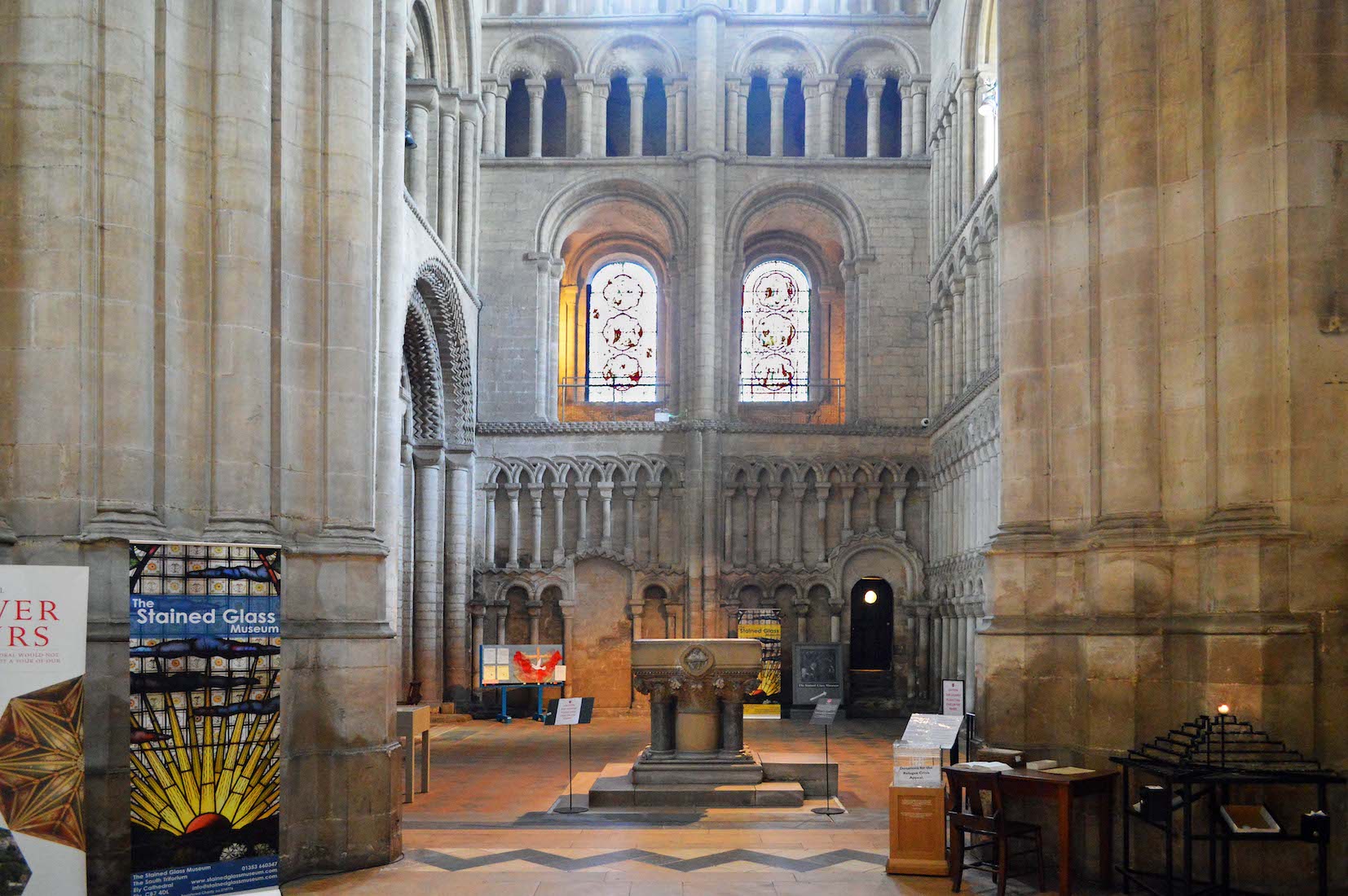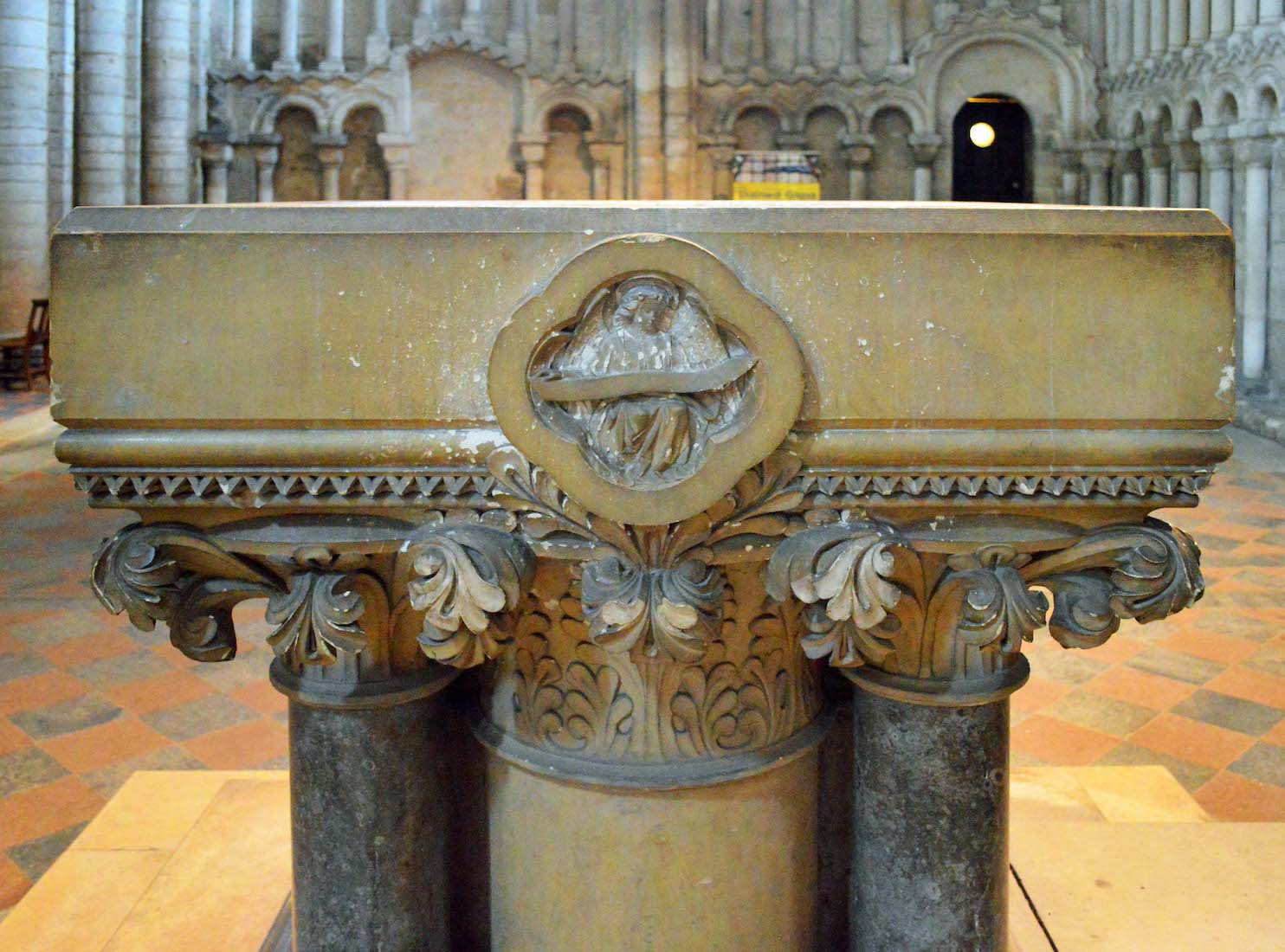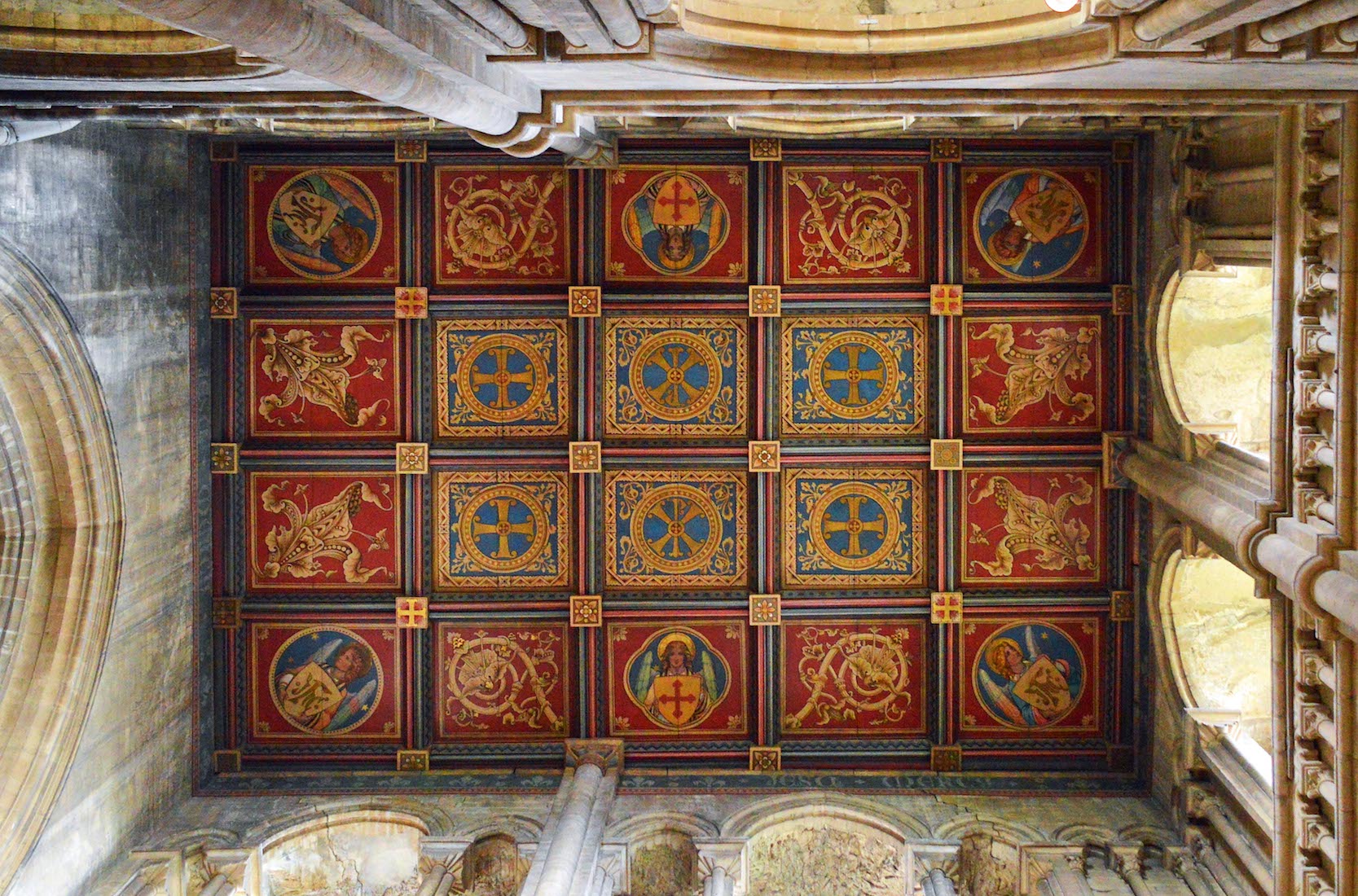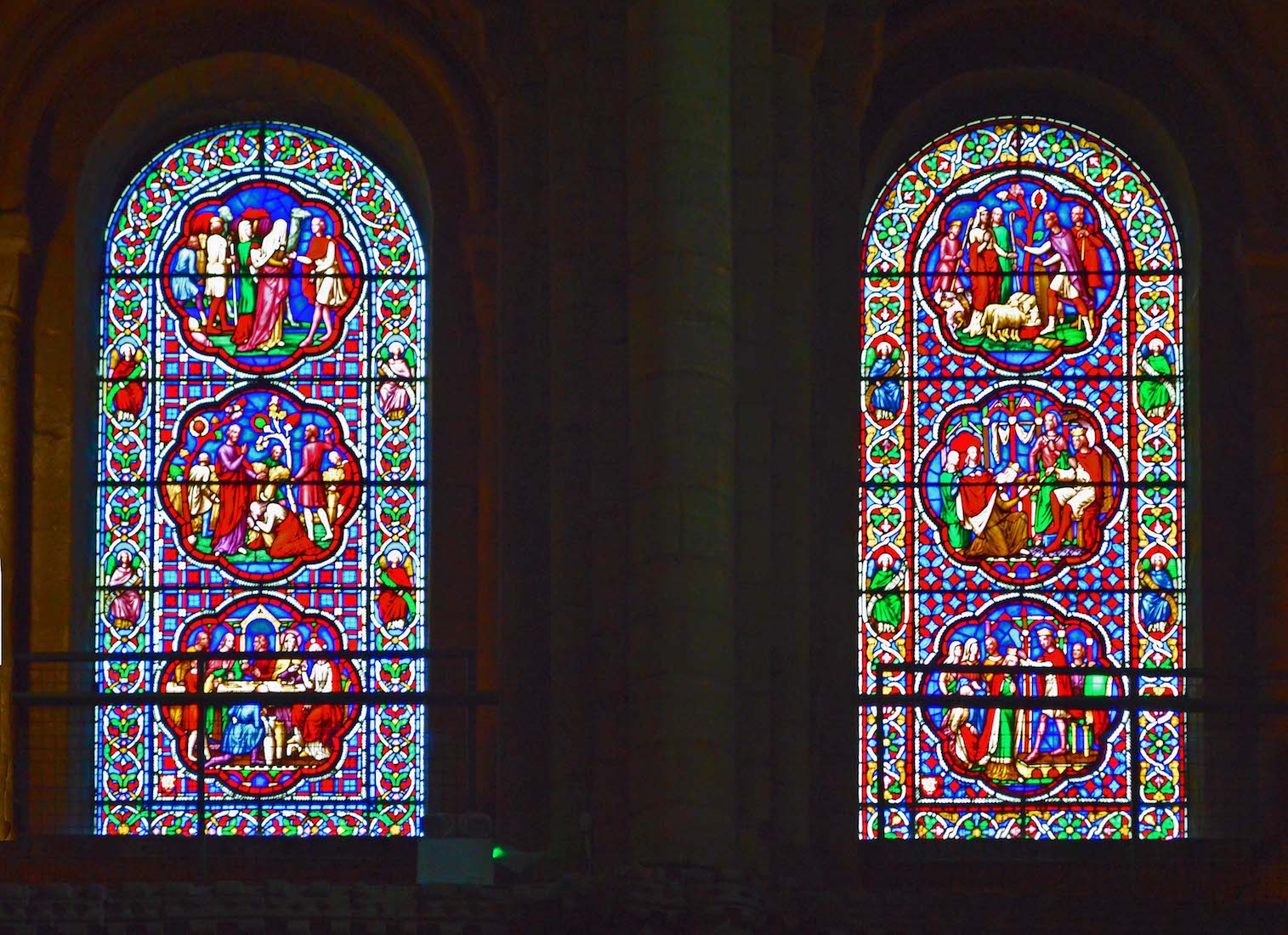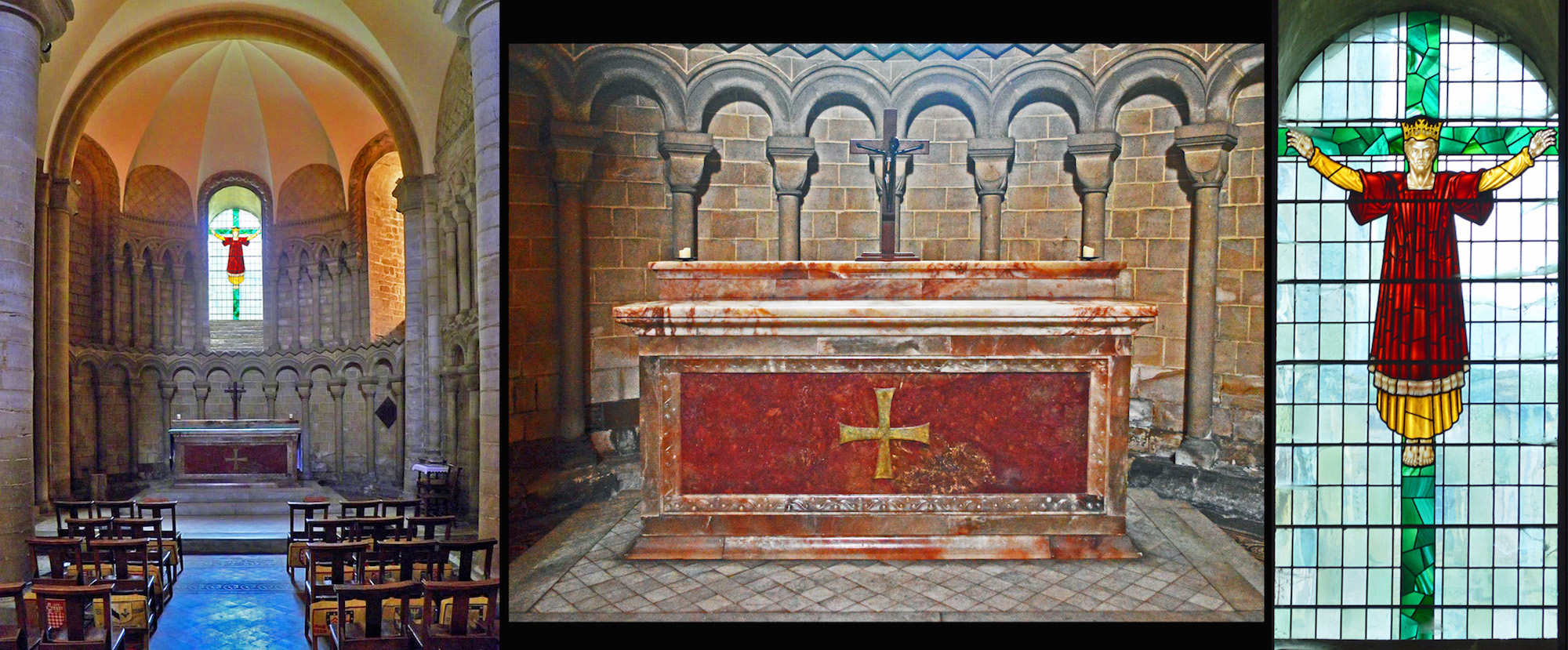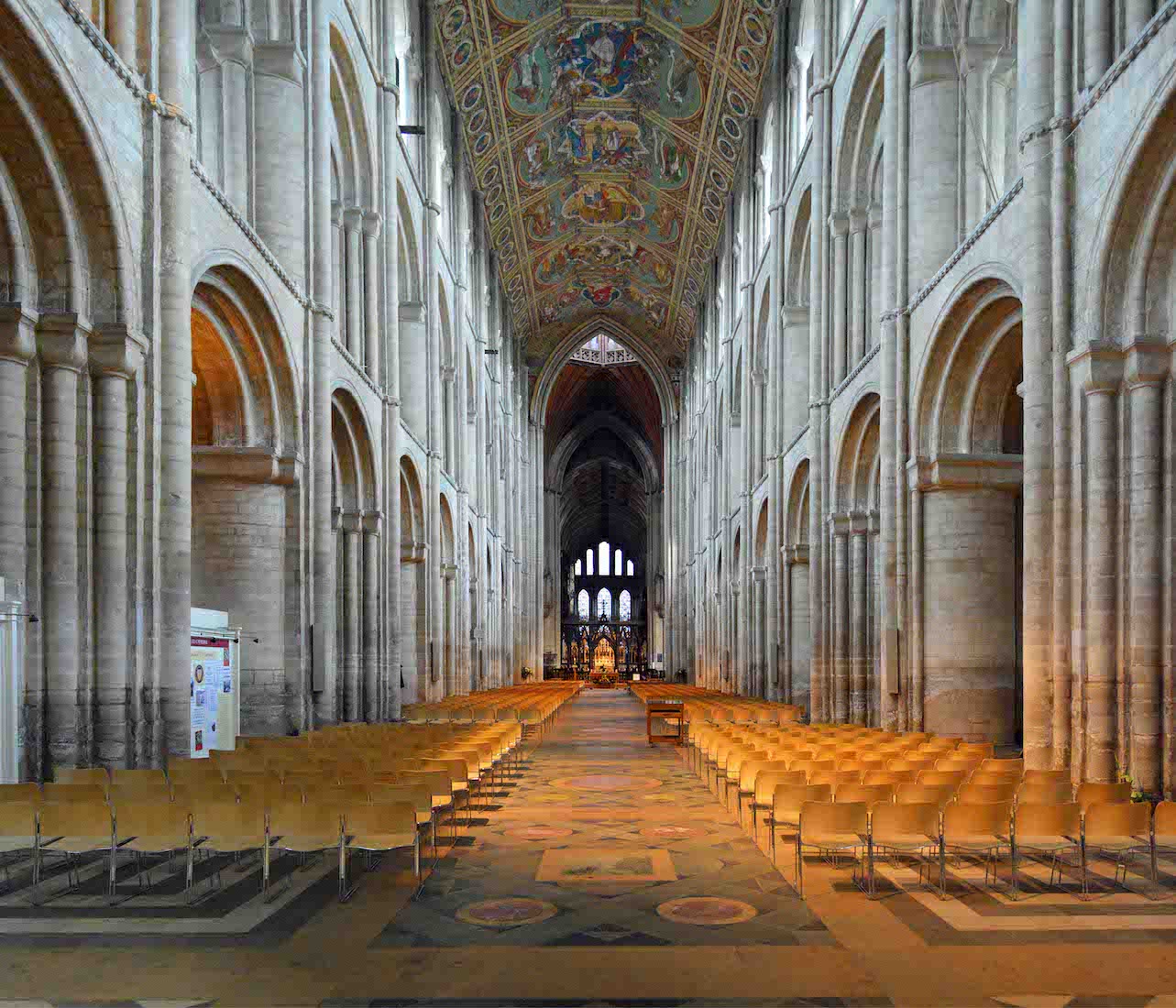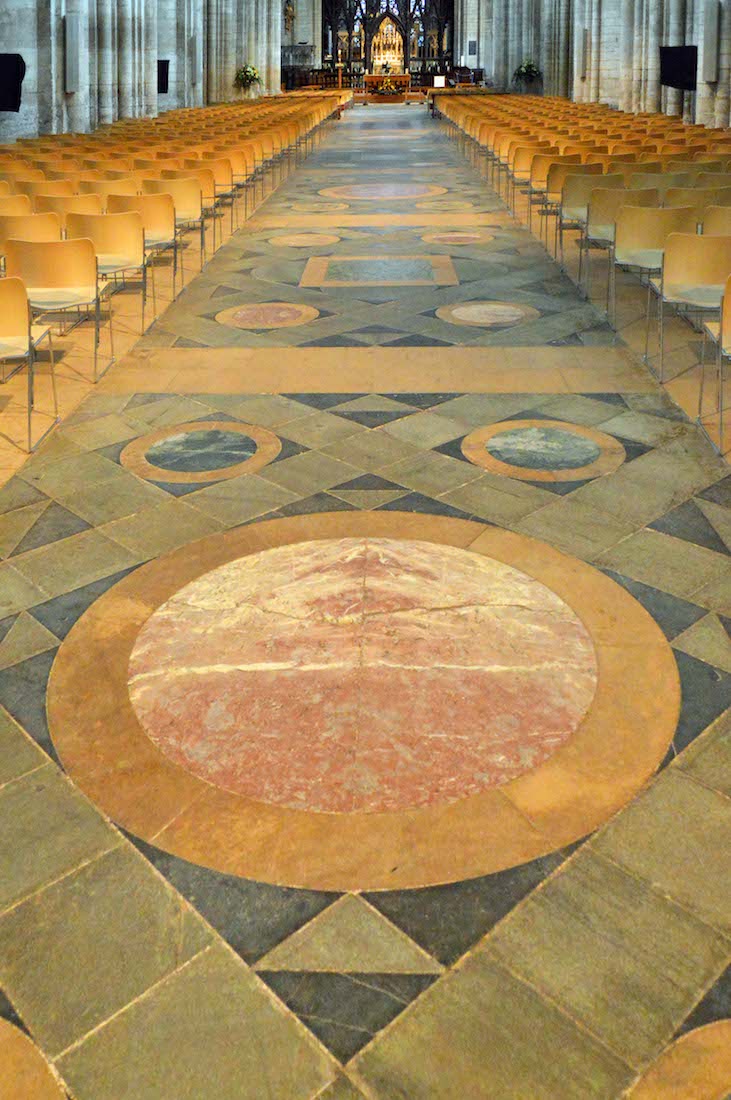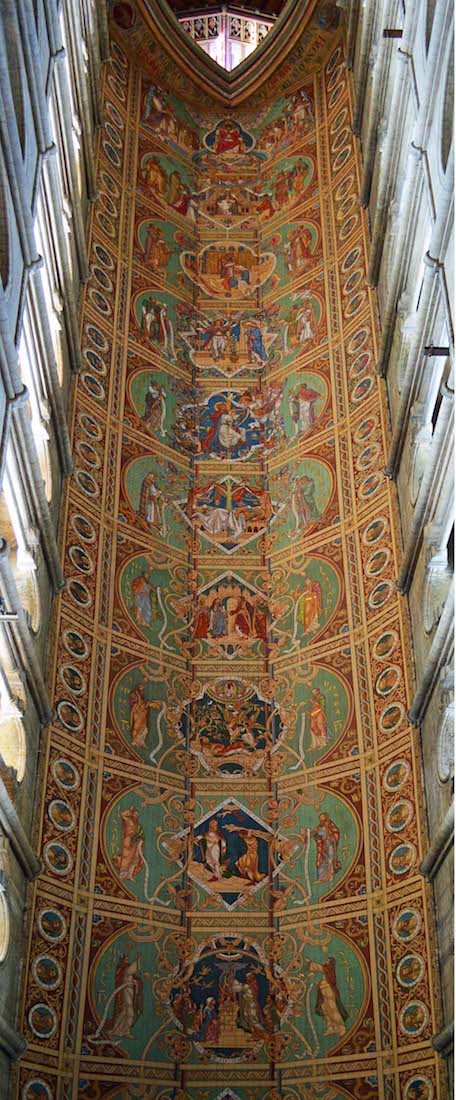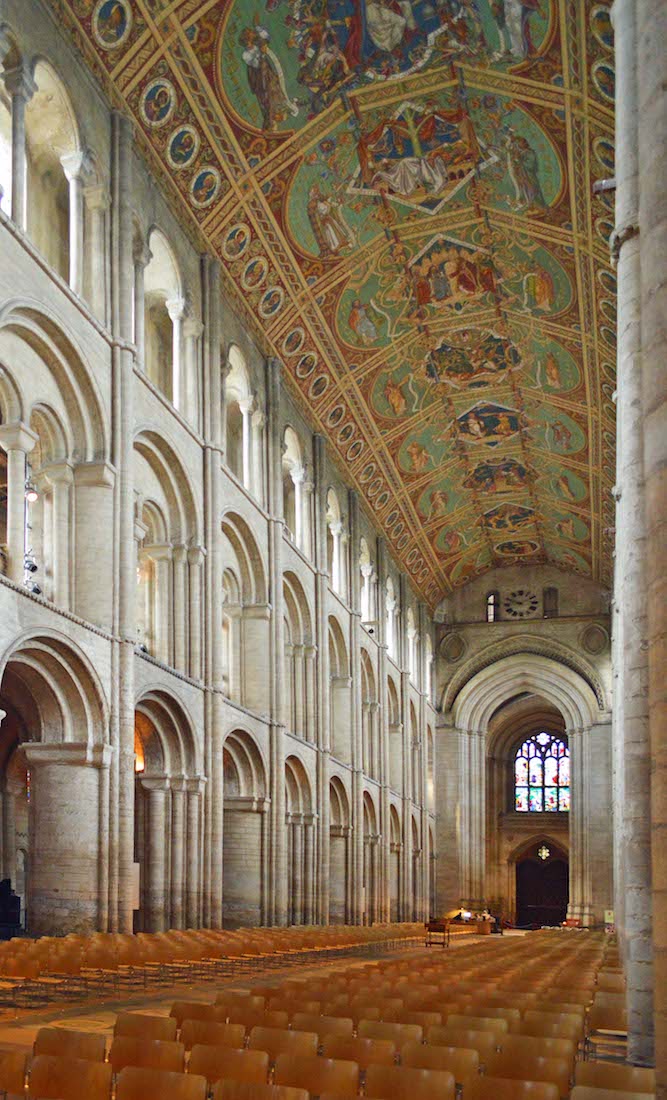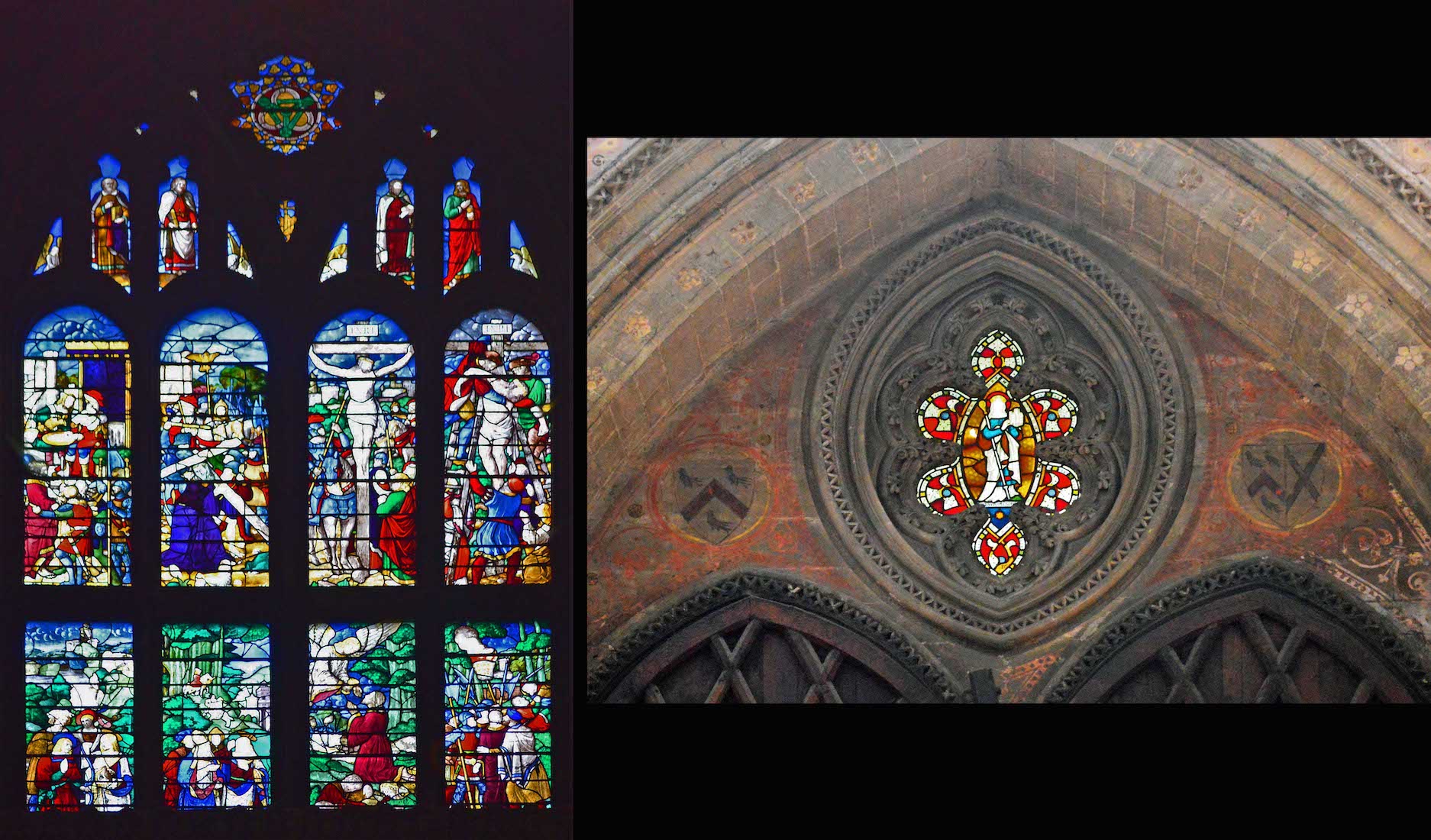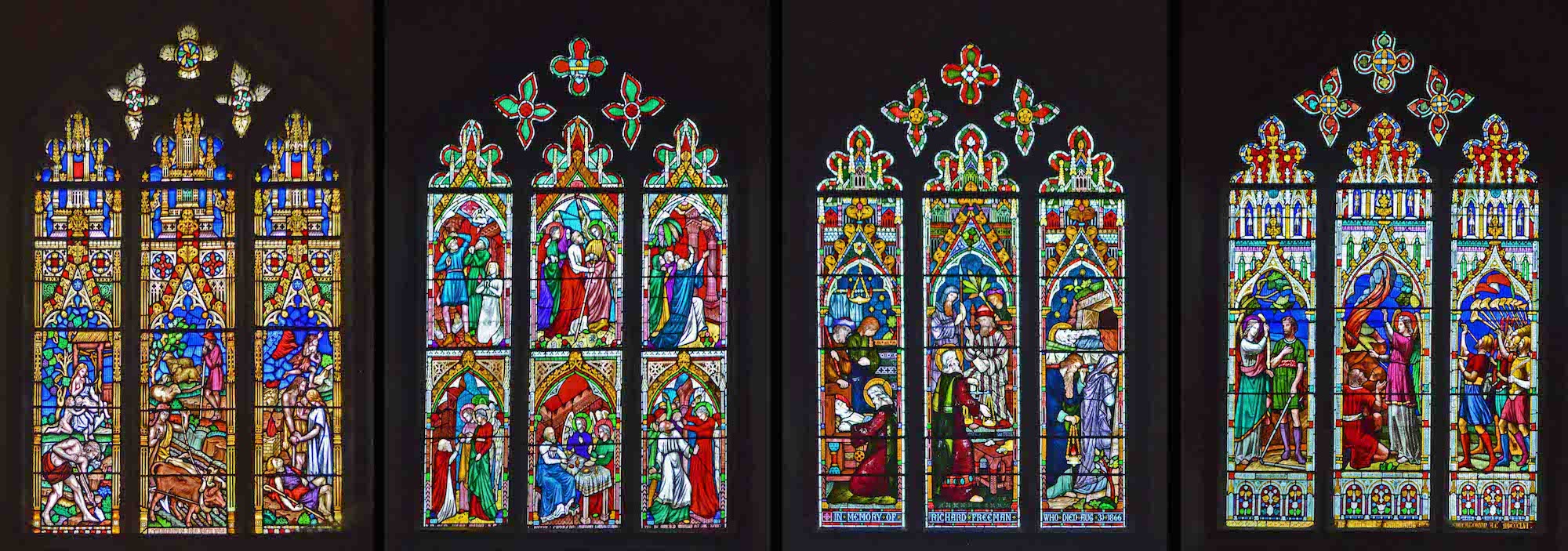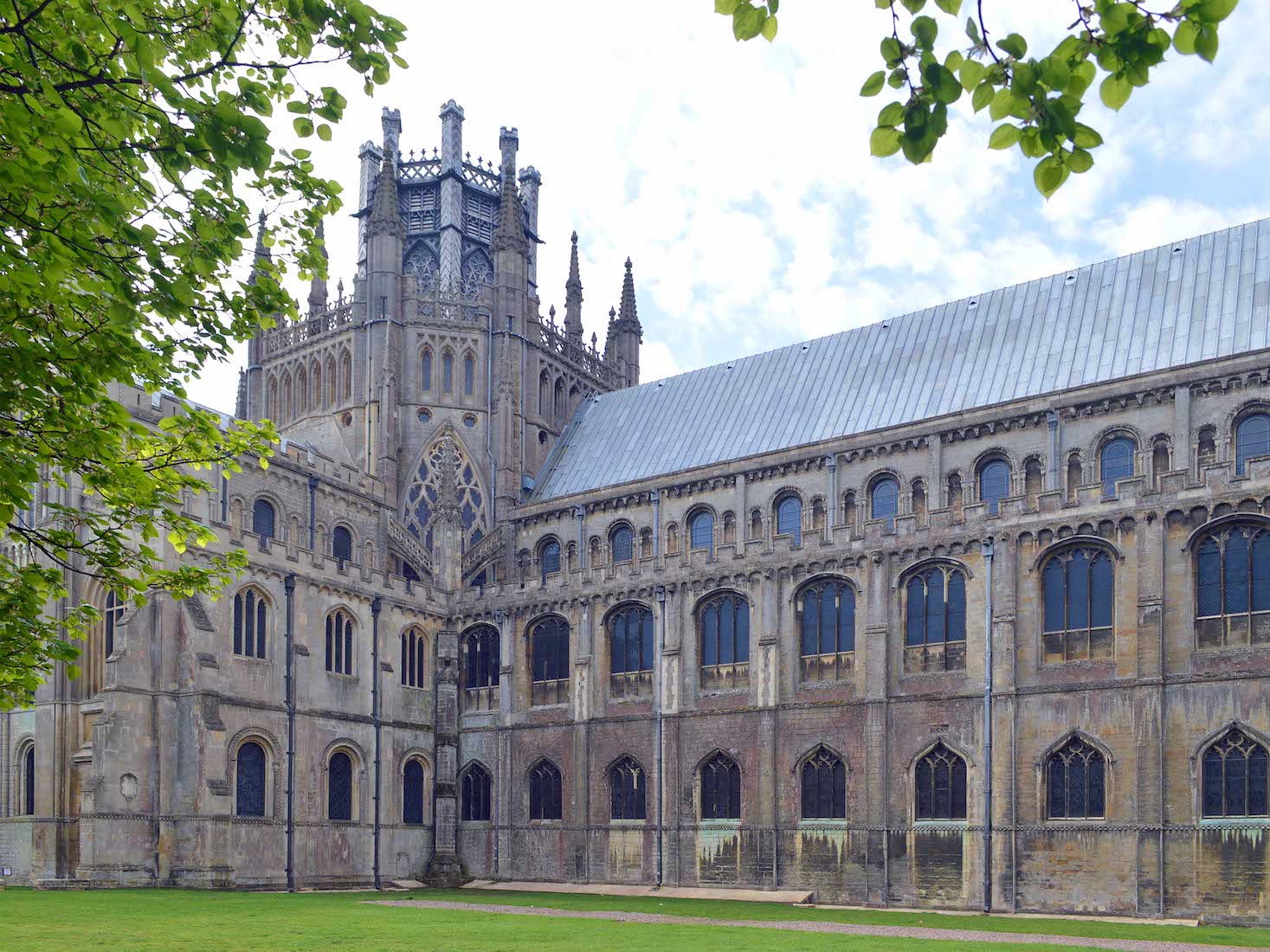
The nave has three levels of windows. Above the lower level of stained glass windows is the triforium level of almost all clear glass windows, and above them the clerestory level – allowing light into the high nave. PLAN
22. PREVIOUS NORTHWEST TRANSEPT
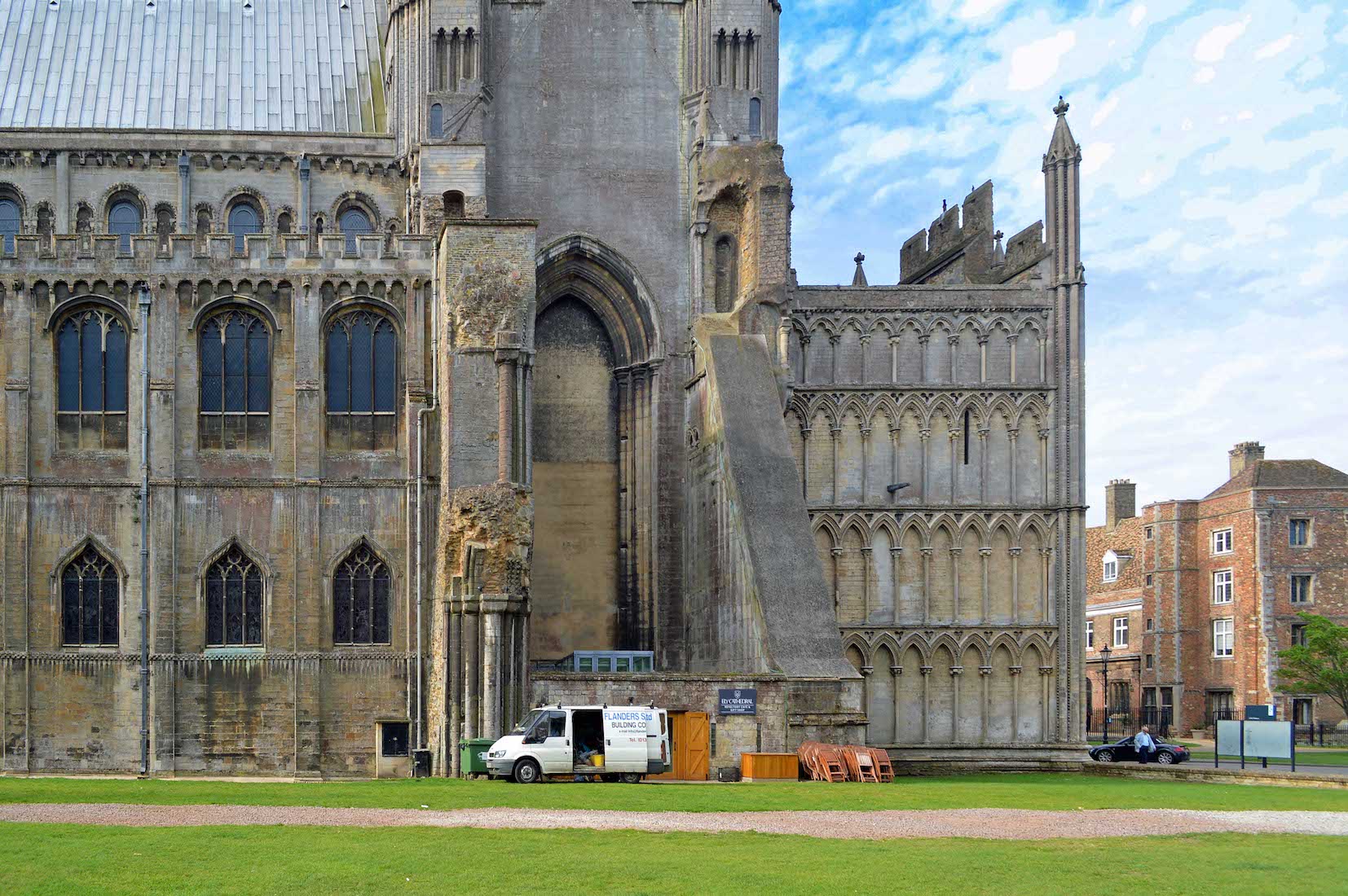
Originally the West front had transepts running symmetrically either side of the West tower. However, there were problems from subsidence in areas of soft ground at this end of the cathedral. In 1405-7, four new arches were added at the West crossing to strengthen the tower. The extra weight of these works may have added to the problem, as at the end of the fifteenth century the Northwest transept collapsed. A great sloping mass of masonry was built to buttress the remaining walls, which remain in their broken-off state on the North side of the tower.
23. NORTH WEST VIEW
The half-built West tower and upper parts of the two Western transepts were completed under Bishop Geoffrey Ridel (1174–89), to create an exuberant West front, richly decorated with intersecting arches and complex mouldings. The new architectural details were used systematically to the higher storeys of the tower and transepts. Rows of trefoil heads and use of pointed instead of semicircular arches, resulted in a West front with a high level of orderly uniformity.
24. THE GALILEE PORCH
The Galilee porch is now the principal entrance into the Cathedral for visitors. Its original liturgical functions are unclear, but its location at the West end meant it may have been used as a chapel for penitents, a place where liturgical processions could gather, or somewhere the monks could hold business meetings with women, who were not permitted into the abbey. It also has a structural role in buttressing the west tower. The walls stretch over two storeys, but the upper storey now has no roof, it having been removed early in the nineteenth century. Its construction dating is also uncertain.
26. GALILEE PORCH INTERIOR
The porch is attractive inside. Records suggest it was initiated by Bishop Eustace (1197–1215), and it is a notable example of Early English Gothic style. But there are doubts about just how early.
27. NARTHEX
This high view looks across the Southwest transept into the narthex. On the far wall is a giant depiction of a winding path leading to the Cross. This is Jonathan Clark’s modern sculpture, ‘The Way of Life’ – travelling from darkness into light and leading us to Christ. Below is the entry into the Cathedral refectory. On the floor is a geometric labyrinth. In the foreground, and in the transept itself, is a baptismal font.
28. THE LABYRINTH
If you follow this Victorian labyrinth round, it runs for the same distance as the height of the tower. With its twists and turns it reminds us that the Christian life is far from straightforward. The pilgrim can make his or her own interpretation, but I like to think of it as a journey into God and his love at the centre, and then a return to the world, bearing that presence and love.
29. CHRISTUS STATUE
In the Northeast corner of the narthex stands the figure ‘Christus’. This statue by Hans Freibusch reminds us of God’s costly love. Christ’s wounded hands are open to welcome each one of us, whoever we are, wherever we come from and whatever the situation.
30. THROUGH TO THE SOUTHWEST TRANSEPT
Looking to the South we immediately see the baptismal font. Behind is a colonnaded wall with a pair of stained glass windows behind a balcony pathway. At bottom right of the wall is a doorway leading to a spiral staircase and this balcony, and so to the Stained Glass Museum. We shall explore this later. At right is a large open archway.
31. BAPTISMAL FONT
Many of the cathedral furnishings, including this baptismal font, date from the Victorian restoration. Fonts are generally sited near the principal entrance of a church because it is through baptism, the ceremony performed at the font, that new Christians enter into membership of the Church.
32. SOUTHWEST TRANSEPT CEILING
The Southwest transept has one of England's most ornate Romanesque interiors and was extensively restored in 1844. The attractive ceiling comprises 20 square tiles. In the centre are four Crosses and two Chi-Rho symbols. Of the outer tiles, six depict angels holding various shields. These are separated by tiles depicting one of two floral symbols.
33. TRANSEPT WINDOWS
The Southwest transept contains a pair of stained glass windows on the South wall. In the left window the scenes depicted are (from top): Isaac and Rebecca, Boaz and Ruth, and the Marriage at Cana. In the right window we see (from top): Jacob, Rachel, and Esther.
34. ST CATHERINE’S CHAPEL
This little chapel is placed on the East side of the Southwest transept. It is available for prayer and reflection. There is a simple altar, behind which is a window of the Glorified Christ with a Cross behind.
35. NAVE
The nave is enormous! Two rows of Norman arches are supported by alternate large compound and round columns, which march away into the distance. Floor and ceiling are ornate, and in the distance we glimpse the famous octagon. The three-storey nature of the nave is evident, with triforium and clerestory levels above the seating area.
36. NAVE FLOOR
Both the floor and ceiling of the nave are Victorian. The pavement (1869) replaced rough stones that were showing signs of subsidence. The pattern of the central aisle is interesting, but below the seating is a collection of various quite striking geometric patterns.
37. NAVE CEILING
The wooden ceiling (1858) was painted by two gifted amateurs, Henry Styleman le Strange and his friend Thomas Gambier Parry. They painted the ceiling in situ, on their backs on scaffolding in poor light, like Michelangelo. The ceiling shows how all of history, starting from Adam, points to and is fulfilled in Jesus Christ.
38. NAVE – TO THE WEST
This gives a fuller understanding of the nave, looking towards the West. In particular, we notice the West window, and the small window above the Western doors.
39. WEST WINDOWS
The large window at left shows various scenes from the Passion and Crucifixion of Christ. The window consists of some 16th century French glass, possibly from Rouen, which was added to by Clutterbuck in the early 19th century. The smaller window at right shows St Etheldreda holding a miniature of the Church.
40. NORTH NAVE WINDOWS
There are twelve windows along the North wall of the nave. Here we have the Westernmost four, starting above the shop. These depict (from left): • Adam and Eve; •• Lot; ••• Death of Sarah and Abraham; •••• Gideon.


